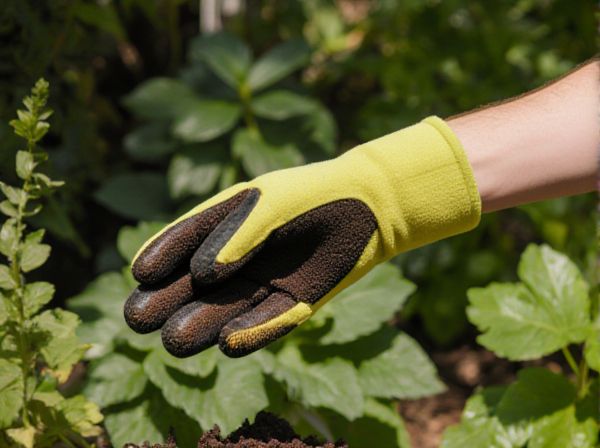
Pre-composting vs Post-composting Illustration
Pre-composting involves the initial breakdown of organic materials, enhancing microbial activity and making the waste more homogenous before final composting. Post-composting occurs after the primary decomposition, focusing on curing and stabilizing the material to ensure nutrient-rich, mature compost. Both stages optimize the composting process, improving soil health and reducing environmental impact.
Table of Comparison
| Aspect | Pre-Composting | Post-Composting |
|---|---|---|
| Definition | Initial stabilization of organic waste before full composting. | Final treatment phase improving compost quality and maturity. |
| Process Duration | Short-term (days to weeks) | Longer-term (weeks to months) |
| Purpose | Reduces volume and moisture; initiates decomposition. | Enhances nutrient content; ensures pathogen elimination. |
| Microbial Activity | Moderate, beginning aerobic breakdown. | High, with full aerobic decomposition. |
| Output Quality | Partially decomposed organic matter. | Stable, nutrient-rich, mature compost. |
| Environmental Impact | Reduces odor and leachate risk early in process. | Minimizes greenhouse gas emissions and pathogens at end stage. |
Understanding Pre-composting and Post-composting
Pre-composting involves partially decomposing organic waste to stabilize materials and reduce pathogens before final composting, enhancing process efficiency and odor control. Post-composting refers to the curing phase after active composting, where microbial activity slows, and the material matures into stable compost suitable for soil amendment. Understanding these stages optimizes compost quality, nutrient retention, and ensures safe application in agriculture and horticulture.
Key Differences Between Pre-composting and Post-composting
Pre-composting involves the initial breakdown of organic materials, primarily focusing on moisture reduction and volume stabilization before final composting. Post-composting occurs after the main composting phase, emphasizing maturation, pathogen reduction, and odor control to ensure safe, high-quality compost. Key differences lie in their timing, process objectives, and the specific microbial activity stages targeted during each phase.
Benefits of Pre-composting in the Garden
Pre-composting stabilizes organic waste by reducing odors and minimizing potential pest attraction, which ensures a more manageable and hygienic composting process in the garden. This phase accelerates the breakdown of raw materials, improving nutrient availability and enhancing soil fertility when applied. Pre-composting also helps conserve water by retaining moisture, promoting healthier plant growth and increased microbial activity in the garden soil.
Advantages of Post-composting for Plant Health
Post-composting enhances plant health by providing fully stabilized organic matter rich in humic substances that improve soil structure and nutrient availability. This process reduces phytotoxic compounds, minimizing the risk of plant damage and promoting robust root development. Furthermore, post-composted material supports beneficial microbial communities that boost plant immunity and stress tolerance.
Common Materials Used in Pre-composting
Common materials used in pre-composting include organic waste such as food scraps, garden trimmings, and agricultural residues rich in nitrogen and carbon. Bulking agents like wood chips, straw, and shredded cardboard improve aeration and moisture control during the pre-composting phase. These materials help initiate microbial activity, accelerating the breakdown process before the final composting stage.
Methods and Techniques for Effective Post-composting
Post-composting techniques focus on refining partially decomposed organic materials through controlled aeration, moisture regulation, and temperature management to enhance microbial activity and stabilize nutrient content. Methods such as windrow turning, forced aeration, and moisture monitoring are employed to accelerate maturation and reduce phytotoxic compounds, ensuring a high-quality, odor-free end product. Effective post-composting improves the humification process, resulting in nutrient-rich compost suitable for sustainable agriculture and soil amendment.
Pre-composting vs Post-composting: Environmental Impact
Pre-composting significantly reduces methane emissions by stabilizing organic waste before full decomposition, minimizing anaerobic conditions often found in post-composting processes. Post-composting, while effective in nutrient recovery, can generate higher greenhouse gases due to extended microbial activity in less controlled environments. Overall, pre-composting offers a more environmentally sustainable approach by lowering greenhouse gas emissions and improving odor control during the initial waste treatment phase.
Troubleshooting Issues in Pre-composting and Post-composting
Troubleshooting issues in pre-composting typically involves addressing insufficient aeration and moisture imbalance, which can hinder microbial activity and slow organic matter breakdown. In post-composting, common problems include incomplete maturation and contamination from undecomposed materials, affecting the quality and safety of the final compost. Effective monitoring of temperature, oxygen levels, and moisture content during both stages is crucial to optimize decomposition and ensure pathogen reduction.
Best Practices for Transitioning from Pre- to Post-composting
Effective transition from pre-composting to post-composting requires maintaining optimal moisture levels between 40-60% to promote microbial activity and prevent odor issues. Turning frequency should gradually decrease from daily or every-other-day during pre-composting to weekly in post-composting, enhancing aeration while stabilizing the material. Monitoring temperature is critical, with pre-composting temperatures reaching 55-65degC for pathogen reduction, then cooling below 45degC during post-composting to facilitate maturation and nutrient stabilization.
Which Composting Method is Right for Your Garden?
Pre-composting enhances organic matter by partially decomposing materials, accelerating nutrient release and improving soil structure, ideal for gardens requiring quick nutrient availability. Post-composting allows for complete decomposition, producing stable humus that enriches soil health over time, benefitting long-term garden sustainability. Choosing between pre-composting and post-composting depends on your garden's nutrient needs and timeline for plant growth.
Pre-composting vs Post-composting Infographic

 gardendif.com
gardendif.com